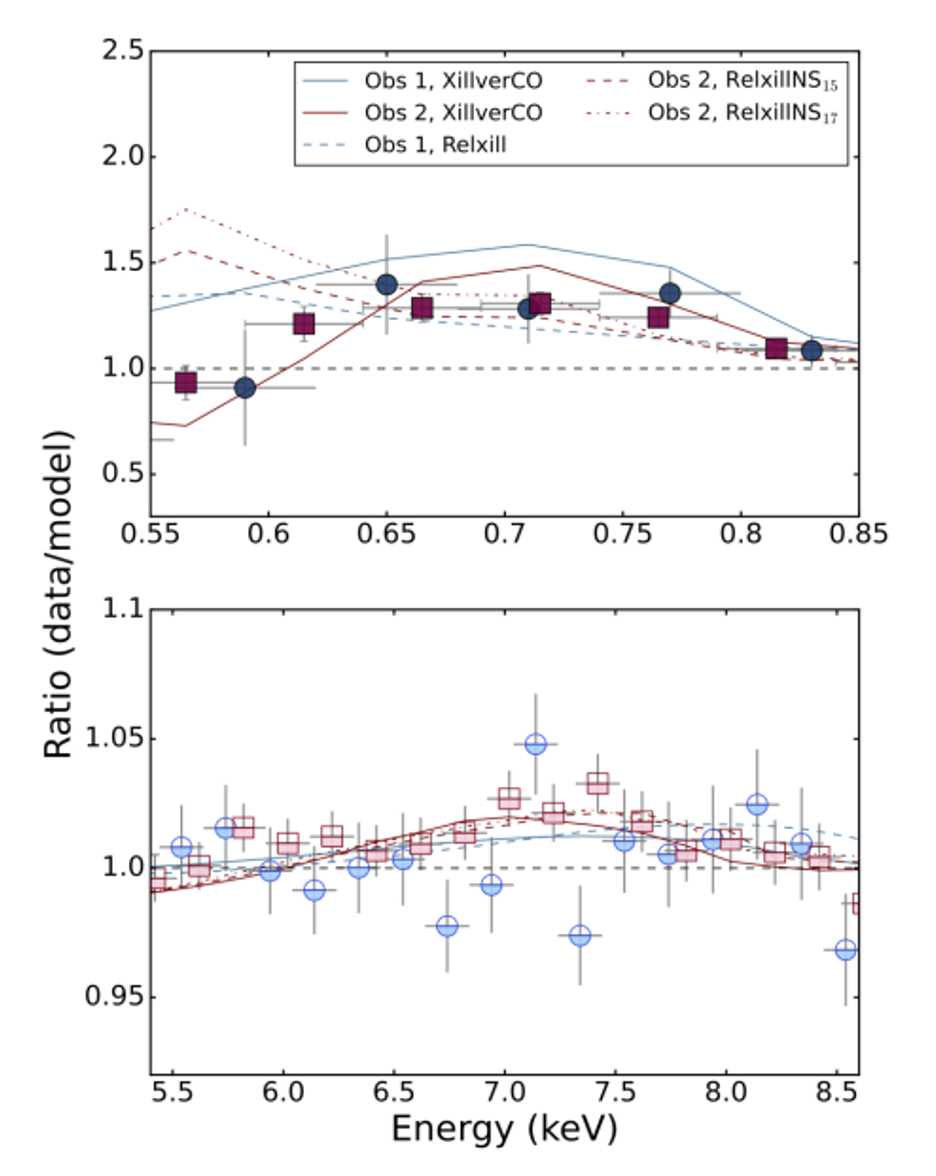NICER / ISS Science Nugget
for June 20, 2024
Reflecting on binary classification
A low-mass X-ray binary (LMXB) consists of a compact object, such as a neutron star or black hole, drawing matter from an orbiting companion star. Ultra-compact X-ray binaries (UCXBs) are a subclass in which the orbital period is less than about 80 minutes, and the companion is a physically diminutive star, such as a white dwarf, capable of fitting within a small orbit. The accretion flow in such systems - the transfer of material from the companion onto the compact object - typically proceeds through a disk of superheated gas that radiates very efficiently in X-ray light. While the signatures of accretion at work are readily recognizable, it's not always easy to classify a given X-ray-bright binary. A clue may be provided by reflection modeling, an approach that accounts not only for the accretion-disk X-rays that reach us directly, but also X-rays that illuminate the disk from adjacent hot plasma and are reprocessed, then re-emitted, by atoms within the disk flow. The chemical abundances of the disk leave unique signatures on this "reflected" X-ray spectrum. Usefully, UCXBs tend to exhibit stronger oxygen features (with photon energies around 0.7 keV) than do wider-orbit LMXBs, which instead display higher iron abundances (clustering near 6.4 keV), where these differences reflect the chemical makeup of the donor star.
The X-ray source known as SLX 1735-269 is a candidate UCXB: it shares some key characteristics of well-established UCXBs but lacks direct evidence to confirm its classification. NICER observed SLX 1735-269 in 2020 and 2021, on both occasions in conjunction with NASA's NuSTAR high-energy X-ray telescope. NICER's coverage of the low-energy X-ray band enabled a test for the presence of the oxygen features expected from a UCXB. In a peer-reviewed study published last week in The Astrophysical Journal, D. Moutard (Wayne State Univ.) and collaborators compared three state-of-the-art models of accretion disk reflection, including relativistic line-broadening effects, with the combined NICER-NuSTAR data: xillverCO, which assumes a disk with UCXB-type abundances (high oxygen, low hydrogen and helium); relxill, which assumes typical LMXB abundances (more iron and hydrogen); and relxillNS, which assumes the same sort of abundances as relxill but with a different source of disk illumination. The team's goal was to see which reflection model best fits the data, seeking additional evidence about the nature of SLX 1735-269. They found that, between the three models, xillverCO represented the data best (see Figure), implying that a disk rich in oxygen is more likely than one without. Moreover, the iron feature, perhaps present in just one of the observations, was weak in comparison to the oxygen feature. In all, this spectroscopic result, while not conclusive, adds to the existing evidence in support of a UCXB classification for SLX 1735-269. Future NICER observations with longer exposures may provide a definitive answer by directly detecting the system's orbital period.

The spectra of SLX 1735-269 in the vicinity of expected oxygen (top, with NICER, centered at 0.7 keV photon energy) and iron (bottom, with NuSTAR, centered at 7 keV) lines, in the first (blue) and second (red) joint observations. Corresponding blue and red curves show predictions from the models indicated in the legend. At the lowest energies in the upper panel, the relxillCO model follows the data for the oxygen-line "hump", while the relxill and relxillNS models do not. (Credit: Moutard et al. 2024)
<< Previous
Main Index
Next >>